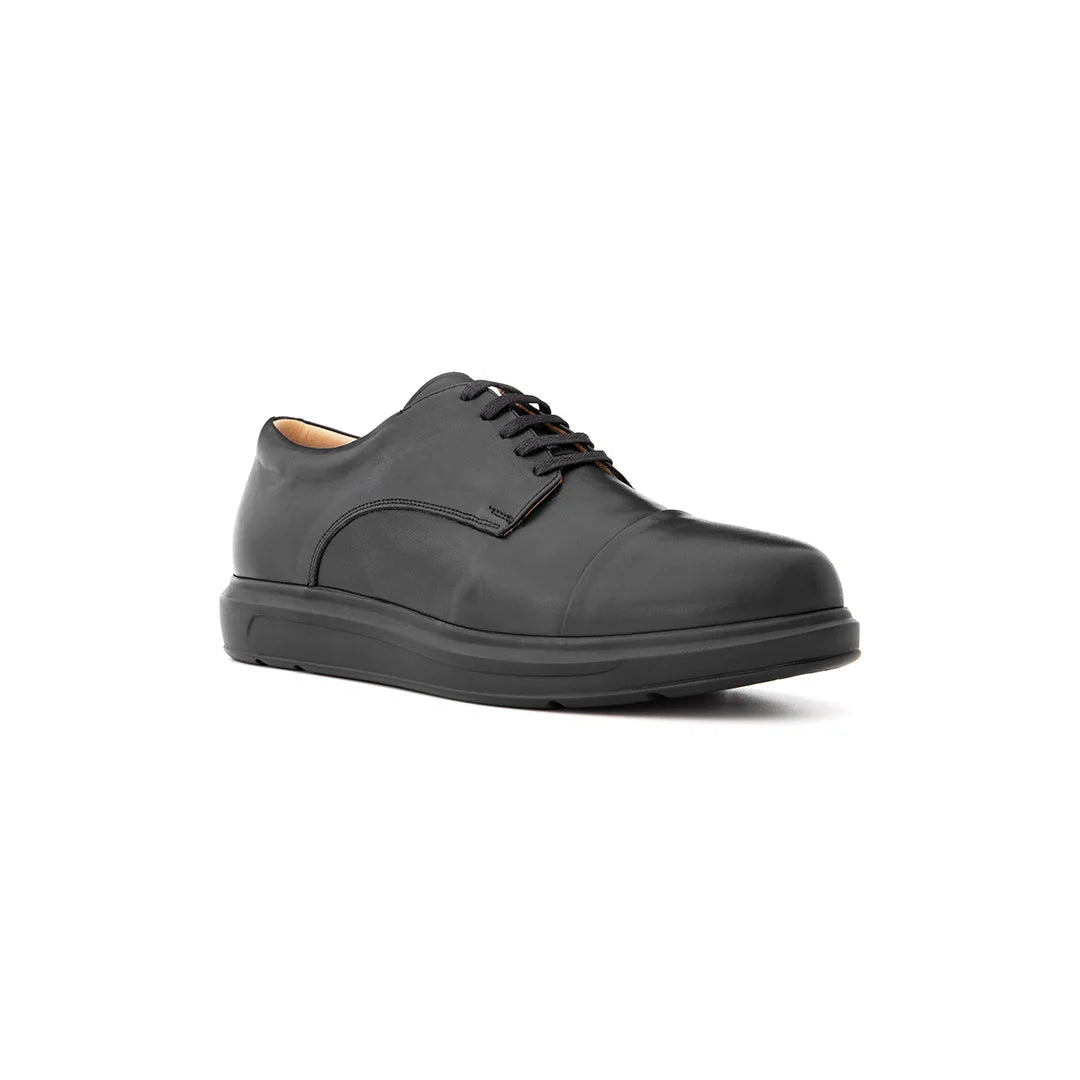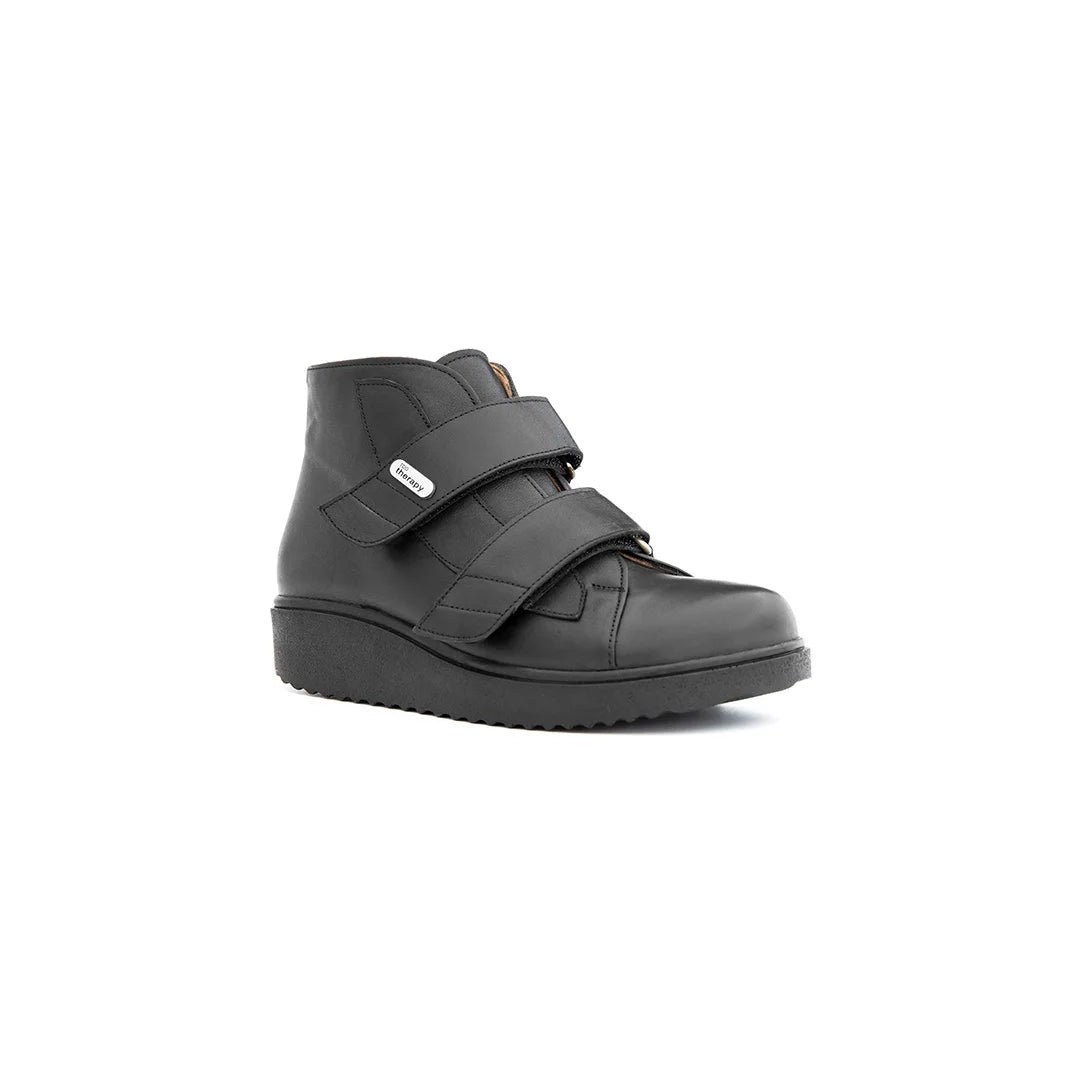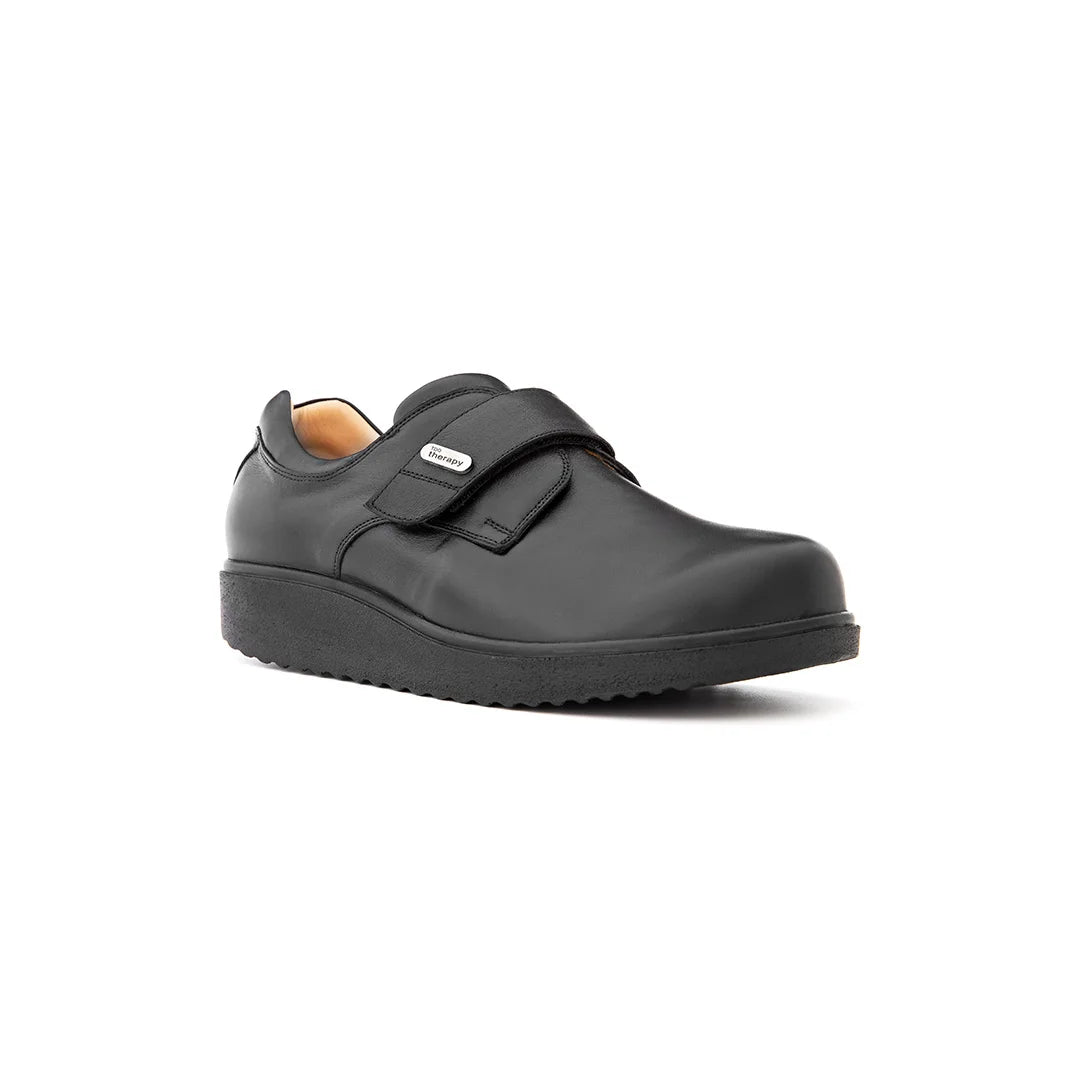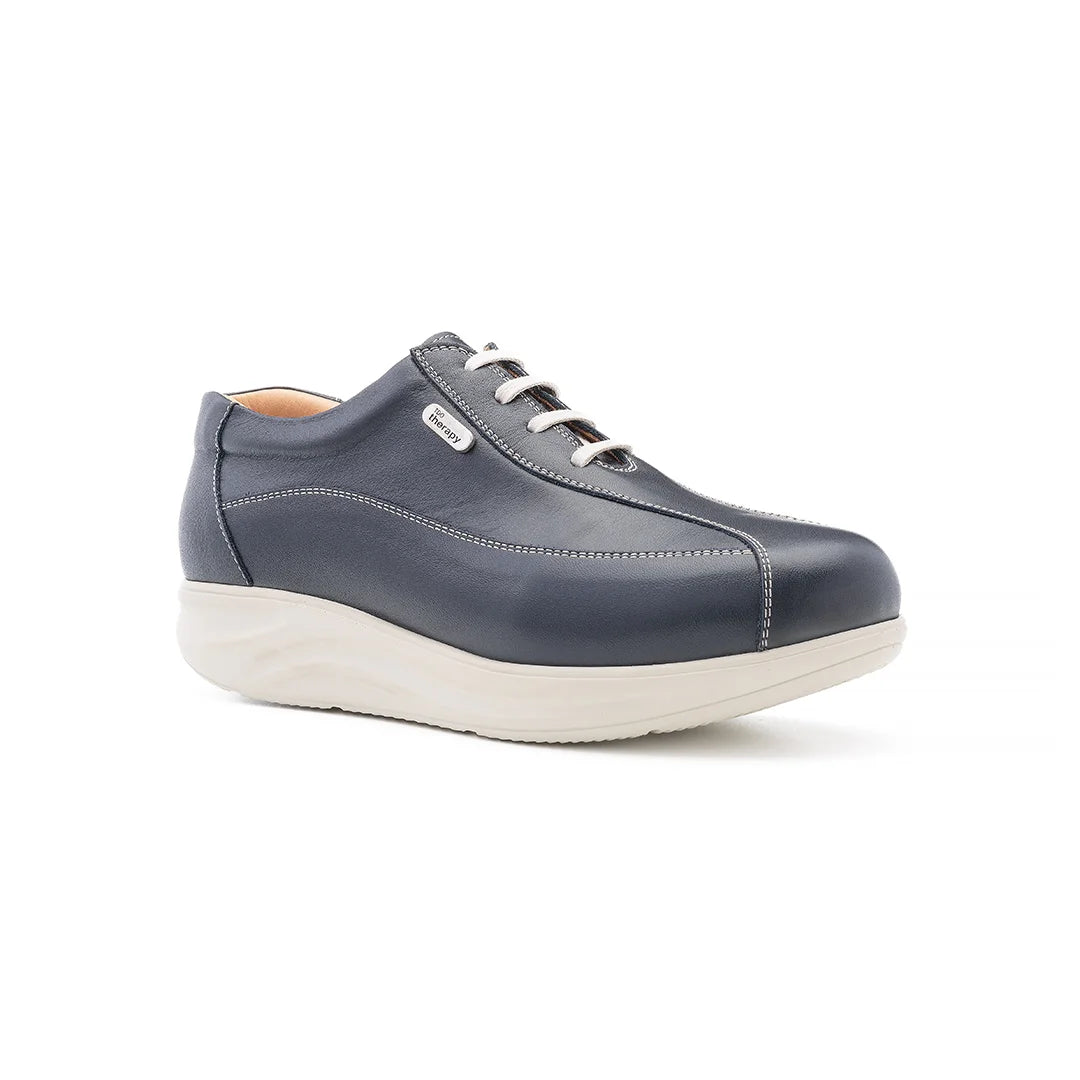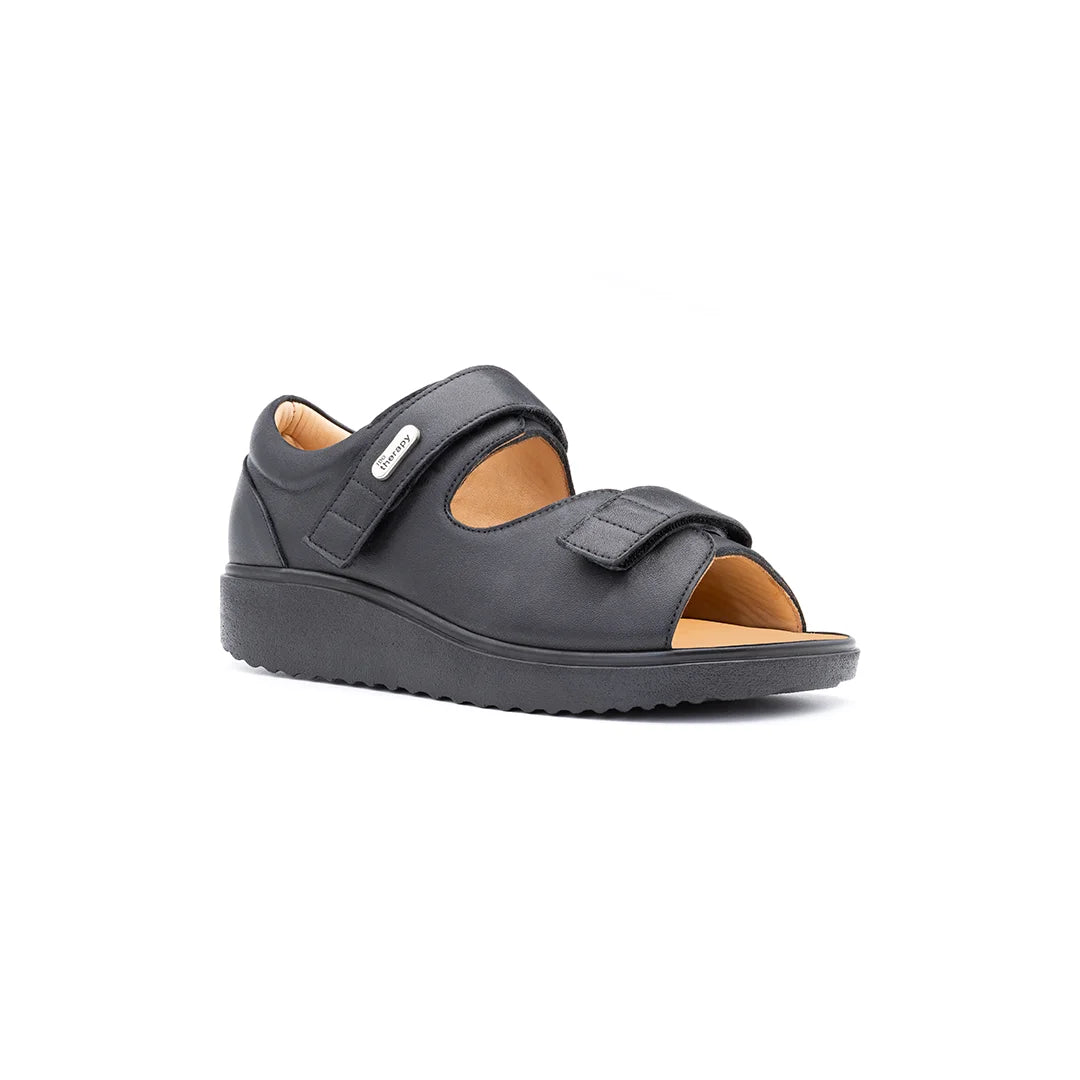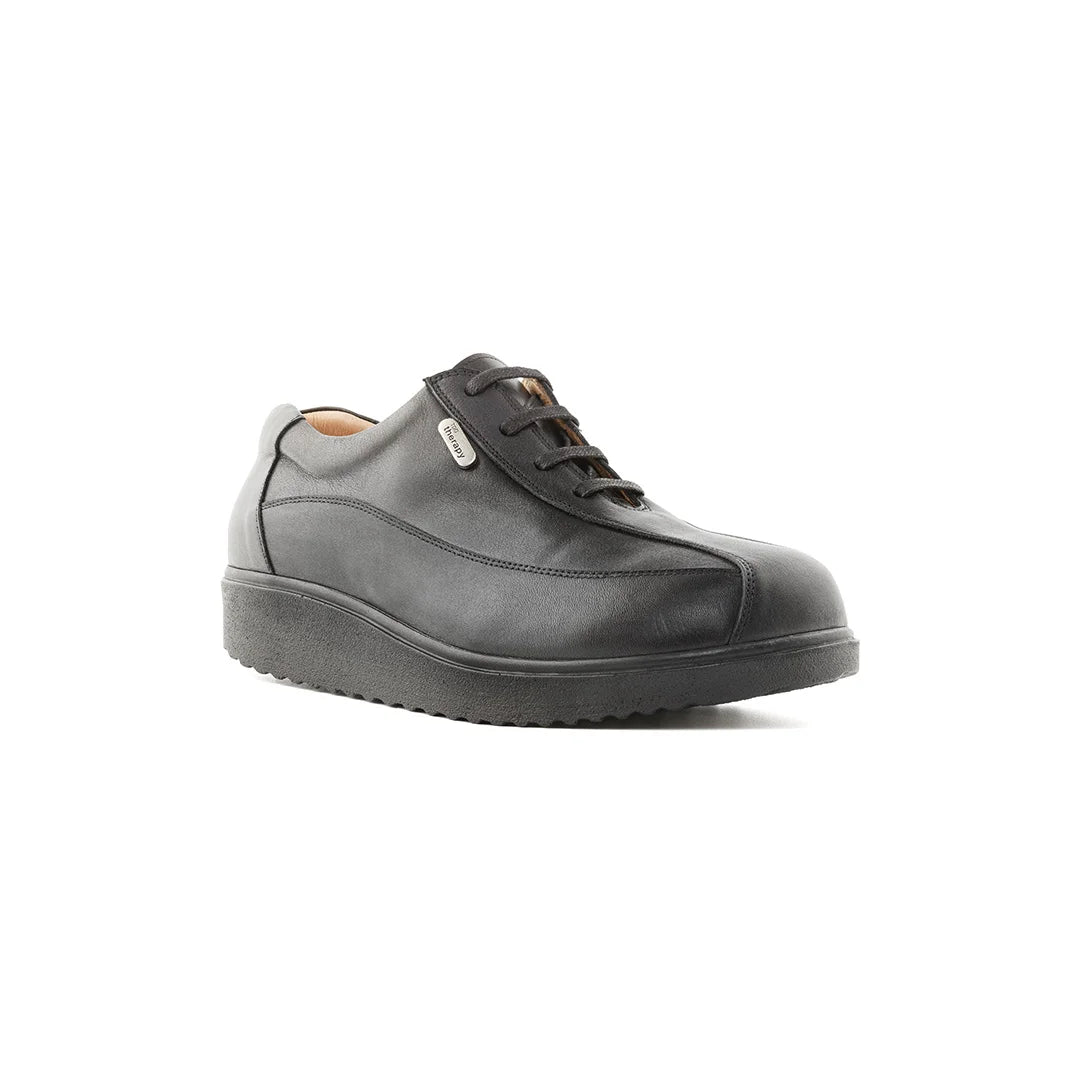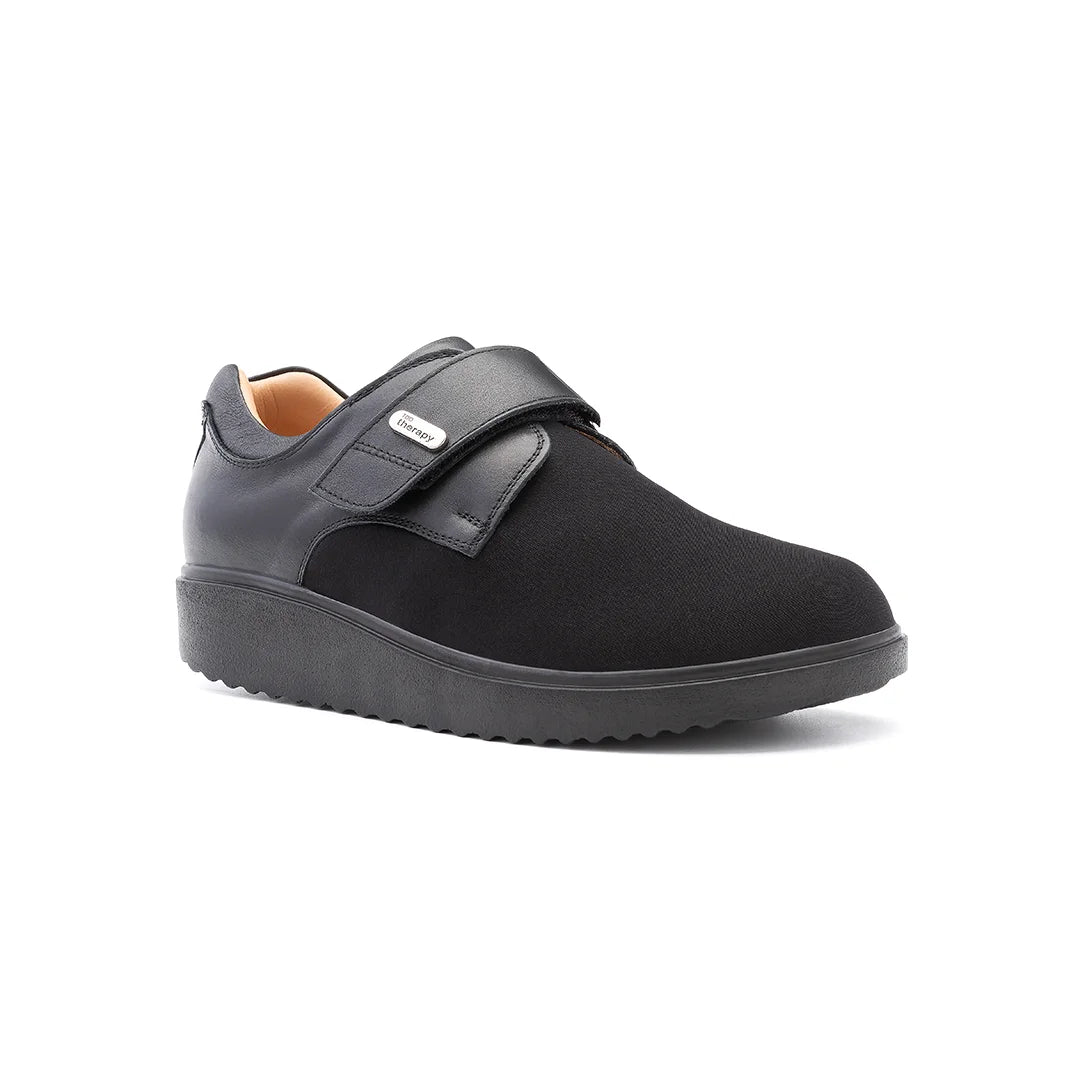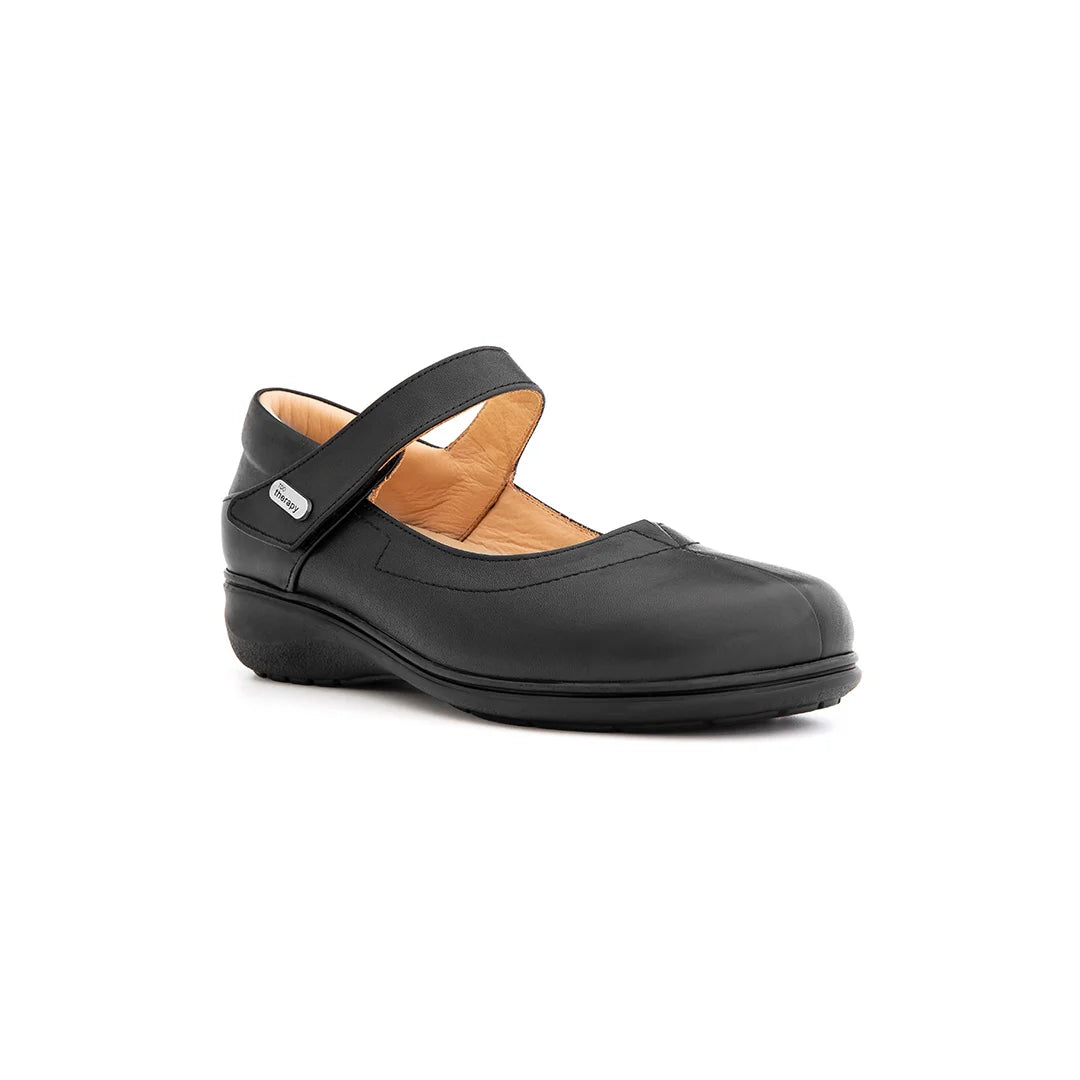Finding the right shoes for swollen feet can be a real challenge, but it's super important for comfort and staying active. When your feet swell, normal shoes just don't cut it, and can even make things worse. This guide will help you figure out what to look for, so you can pick out shoes that feel good and support your feet properly.
Key Takeaways
- Look for shoes with lots of room, especially in the toe area, to stop any squishing and discomfort.
- Adjustable fastenings like Velcro straps or laces are a must, so you can change the fit throughout the day as your foot size changes.
- Soft, stretchy materials are best; they'll shape to your foot without feeling tight or causing pressure.
- Consider shoes with removable insoles if you use special foot supports, or if you just need more depth inside the shoe.
- Always try on shoes later in the day when your feet are usually at their biggest, to get the most accurate fit.
Understanding the Importance of Proper Footwear
We all know how uncomfortable swollen feet can be, right? Finding the right shoes isn't just about fashion; it's about taking care of our feet and making sure we can get through the day without extra pain. Let's have a look at why proper footwear is so important when our feet decide to swell up on us.
Preventing Compression and Discomfort
The main thing is to avoid squeezing our feet! Shoes that are too tight can make swelling even worse and cause a lot of discomfort. We need shoes that give our feet enough room to breathe and move, even when they're feeling a bit bigger than usual. Think of it like wearing comfy socks versus socks that cut off your circulation – big difference, isn't it?
Supporting Feet and Improving Circulation
Good shoes do more than just feel nice; they actually help our feet work properly. Support is key. Shoes with good arch support and cushioning can reduce pressure and soreness. They also help to keep the blood flowing, which is super important when our feet are swollen. It's like giving our feet a gentle massage all day long!
Accommodating Fluctuations in Foot Size
Our feet don't stay the same size all day, do they? Swelling can come and go, so we need shoes that can handle these changes. Adjustable closures, like laces or Velcro straps, are brilliant because we can loosen or tighten them as needed. It's all about finding that sweet spot where our shoes feel snug but not restrictive.
Finding the right shoes for swollen feet is about more than just comfort; it's about maintaining our overall foot health and well-being. By choosing shoes that provide enough space, support, and adjustability, we can keep our feet happy and healthy, no matter how they're feeling.
Essential Features for Shoes for Swollen Feet
When we're looking for shoes to accommodate swollen feet, it's not just about size; it's about features that make life easier and more comfortable. We need to think about what will actually work day-to-day, especially when swelling fluctuates.
The Benefits of a Wide Toe Box
A wide toe box is a game-changer. It lets your toes spread out naturally, which is super important when your feet are swollen. Shoes that squeeze your toes can make swelling worse and lead to pain. A wider toe box gives your feet room to breathe and reduces pressure, making a big difference in comfort.
Adjustable Closures for Customised Fit
Adjustable closures are essential. Laces, Velcro straps, or even buckles can be a lifesaver. The ability to loosen or tighten your shoes as your feet swell throughout the day means you're not stuck with shoes that are either too tight or too loose. It's all about finding that sweet spot of snugness without constriction.
Soft and Stretchable Materials for Comfort
Think about the material of the shoe itself. Soft, stretchable materials like mesh or really supple leather can make a huge difference. These materials adapt to the shape of your foot, providing a snug fit without feeling restrictive. Rigid materials can dig in and cause discomfort, especially when your feet are swollen.
Choosing the right shoe material is key. Breathable fabrics also help prevent moisture build-up, which can exacerbate swelling. Look for shoes that offer both flexibility and support to keep your feet happy all day long.
Key Design Elements for Swollen Feet
When it comes to finding shoes that actually work for swollen feet, it's not just about size; it's about the design. We've found that certain design elements can make a world of difference in how comfortable your feet feel throughout the day. Let's explore some of the key features we always look for.
Deep Toe Boxes for Severe Swelling
If you're dealing with significant swelling, a deep toe box is a must. This provides extra vertical space, preventing your toes from being cramped or compressed. It's not just about width; the height matters too! We've seen how this can alleviate pressure and reduce discomfort, especially if you have conditions like oedema. A deeper toe box allows for more natural movement and reduces the risk of irritation. It's a game-changer for those days when swelling is at its worst.
Flexible Uppers for Varying Swelling
Swelling isn't constant; it fluctuates. That's why flexible uppers are so important. Materials like soft leather, mesh, or stretchy fabrics can adapt to changes in foot size throughout the day. We always recommend shoes with uppers that have some give. This flexibility ensures that your shoes don't become too tight or restrictive as your feet swell. It's all about finding that balance between support and adaptability.
Easy On and Off Mechanisms
Struggling to get your shoes on and off is the last thing you need when your feet are swollen. We always look for shoes with easy-access features. Think wide openings, Velcro straps, or even zip closures. These mechanisms make it much simpler to put on and take off your shoes, reducing strain and discomfort.
We've found that simple design tweaks can make a huge difference in the comfort and functionality of shoes for swollen feet. It's about prioritising features that accommodate swelling, provide support, and make life a little easier.
Optimising Comfort and Support
Cushioned Insoles for Pain Relief
When our feet are swollen, it's like they're constantly shouting for a bit of TLC. That's where cushioned insoles come in. They act like little pillows for your feet, absorbing impact and reducing pressure on sensitive areas. Think of it as a soft landing with every step. We've found that insoles with memory foam or gel inserts work wonders, moulding to the unique shape of your foot and providing targeted support. It's a simple addition that can make a world of difference to your daily comfort.
Shock Absorption for Impact Protection
Ever feel like your feet are taking a beating with every step? That's impact, and it's not fun when your feet are already swollen. Shoes with good shock absorption are essential for protecting your joints and reducing foot fatigue. Look for shoes with midsoles made from materials like EVA or rubber, as these are great at dissipating energy and minimising the jarring effect of walking on hard surfaces. Trust us, your feet (and knees, and back) will thank you for it.
Removable Insoles for Orthotic Use
Removable insoles are a game-changer, especially if you wear custom orthotics or need extra arch support. They allow you to easily swap out the standard insole for something that better suits your needs. Plus, it's super handy for cleaning and airing out your shoes, which can help prevent moisture build-up and keep your feet feeling fresh. It's all about customisation and creating the perfect environment for happy, healthy feet.
Finding the right level of cushioning and support is a bit of trial and error, but it's worth the effort. Don't be afraid to experiment with different types of insoles and shoe features until you find the perfect combination for your feet. After all, happy feet mean a happier you!
Practical Tips for Shoe Shopping
Shopping Later in the Day for Accurate Fit
We've all been there – shoes that feel great in the morning pinch by evening. That's because our feet tend to swell throughout the day. So, when we're on the hunt for new shoes, especially if we're prone to swelling, it's a smart move to hit the shops later in the day. This way, we're trying shoes on when our feet are at their largest, giving us a more realistic idea of how they'll fit and feel.
Wearing Typical Socks During Try-On
It sounds obvious, but it's easily overlooked. Don't go shoe shopping in bare feet or with those super-thin nylon socks they sometimes offer. Wear the type of socks you'd normally wear with the shoes you're planning to buy. If it's trainers, wear your usual sports socks. If it's smart shoes, wear dress socks. And if you use orthotics, bring them along too! It's all about replicating the real-world conditions to get the best fit.
Considering Girth Measurements and Foot Tracings
Standard shoe sizes don't always cut it, especially when swelling is involved. We've found that looking at girth measurements can be a game-changer. Some manufacturers provide these, indicating the shoe's volume. Also, tracing our feet on paper gives us a tangible reference. We can measure the length and width and compare it against size charts. It's a bit old-school, but it works!
When dealing with swollen feet, remember that finding the right shoe is about more than just length. Volume and width are just as important. Don't be afraid to ask for help in the shop, and don't settle for anything that doesn't feel comfortable right away.
Selecting the Right Size for Swollen Feet
Adjusting for Volume Without Compromising Safety
Okay, so finding the right size when your feet are prone to swelling can feel like a real puzzle. It's not just about length; it's about volume, too. We need to make sure we're not just cramming our feet into shoes that are too small, or swimming in shoes that are too big. The key is to find that sweet spot where your foot has enough room to breathe, even when it's at its most swollen, without risking trips and falls. If you're considering going up a size, try half a size first. It's a balancing act, but getting it right makes a world of difference.
The Role of Foot Tracing in Size Selection
Foot tracing? Sounds a bit old-school, right? But trust us, it's a surprisingly useful trick. Grab a piece of paper, pop your foot on it (wearing socks, of course!), and trace around it. Do this later in the day when your feet are likely to be more swollen. Now, measure the length and width of your tracing. This gives you a much more accurate idea of your foot's dimensions than just relying on standard shoe sizes. Plus, you can take these measurements with you when you're shopping, and compare them to the brand's size charts. It's a simple way to get a better fit, especially when shopping online.
Understanding Girth Charts for Optimal Fit
Girth charts? Yeah, they might sound a bit technical, but they're actually super helpful. Some shoe brands provide these charts, which give you the volume measurements of their shoes. This is especially useful if you experience significant swelling, as it helps you find shoes that offer enough room all around, not just in length. Here's a few things to keep in mind:
- Check the brand's website or ask customer service if they have girth charts available.
- Measure the girth of your foot at its widest point (usually around the ball of your foot) when it's swollen.
- Compare your measurements to the chart to find the best fit.
Using girth charts can really take the guesswork out of shoe shopping, especially if you struggle to find shoes that fit comfortably due to swelling. It's all about getting the right volume, not just the right length.
Here's a simple example of how a girth chart might look:
| Size | Girth (cm) |
|---|---|
| 6 | 23 |
| 7 | 24 |
| 8 | 25 |
Specialised Footwear and Professional Advice
Exploring Brands Designed for Swollen Feet
We've found that some brands really get swollen feet. They focus on making shoes that are easy to get on and off, have adjustable straps, and use materials that stretch. These brands often have a range of sizes and widths specifically for people who struggle to find comfortable shoes elsewhere. It's worth checking them out, as they might have exactly what you need.
When to Consult a Podiatrist
Sometimes, despite our best efforts, finding the right shoes can feel impossible. If you're experiencing persistent foot pain, swelling that doesn't go down, or any changes in your feet that worry you, it's time to see a podiatrist. They can assess your feet, diagnose any underlying issues, and recommend specific footwear or orthotics. Don't hesitate to seek professional help; it can make a huge difference.
Tailored Recommendations for Specific Conditions
Different conditions can cause foot swelling, and each might need a slightly different approach to footwear. For example:
- If you have diabetes, you'll need shoes that protect your feet from injury and promote good circulation.
- If you have lymphoedema, you might need shoes that can accommodate significant swelling fluctuations.
- If you have venous insufficiency, you might need shoes that help improve blood flow back to the heart.
It's important to remember that what works for one person might not work for another. Getting tailored advice from a healthcare professional is key to finding the best footwear for your specific needs.
Wrapping Things Up
So, there you have it. Finding the right shoes when your feet are a bit puffy doesn't have to be a nightmare. It's really about knowing what to look for: plenty of room, soft stuff that stretches, and ways to adjust the fit. Remember, your feet change throughout the day, so a shoe that can keep up is a real winner. Don't just grab the first pair you see; take your time, try them on properly, and think about how they'll feel after a long day. Getting the right footwear can make a huge difference to your comfort and how much you can get out and about. It's worth the effort, honestly.
Frequently Asked Questions
What kind of shoes are best for swollen feet?
Shoes that are good for swollen feet should have a wide toe area, adjustable straps (like Velcro or laces), and be made from soft, stretchy materials. These features help the shoes fit comfortably even when your feet change size during the day.
Should I try on shoes at a specific time of day if my feet swell?
Yes, it's a good idea to try on shoes later in the day. Our feet often swell a bit as the day goes on, so trying shoes then helps ensure they'll still be comfortable when your feet are at their largest.
What design features should I look for in shoes for very swollen feet?
Look for shoes with deep toe boxes and flexible tops. These designs give your feet plenty of room and can stretch to fit different levels of swelling. Also, shoes that are easy to get on and off are a big help.
How can shoes help with comfort and support for swollen feet?
Cushioned insoles can make a big difference by easing pain and providing support. Shoes with good shock absorption also protect your feet from impact, which is important for comfort.
Any tips for shoe shopping when my feet are swollen?
When shopping, wear the socks you normally wear. This helps you get the most accurate fit. Also, you might want to measure your foot's girth (around the widest part) and trace your foot to compare with shoe sizes.
How do I pick the right size shoe for swollen feet?
It's often best to pick a size that gives you enough room without being too big. Sometimes going up half a size is enough. Using foot tracings and girth charts can help you find the perfect fit that accounts for the extra volume.


